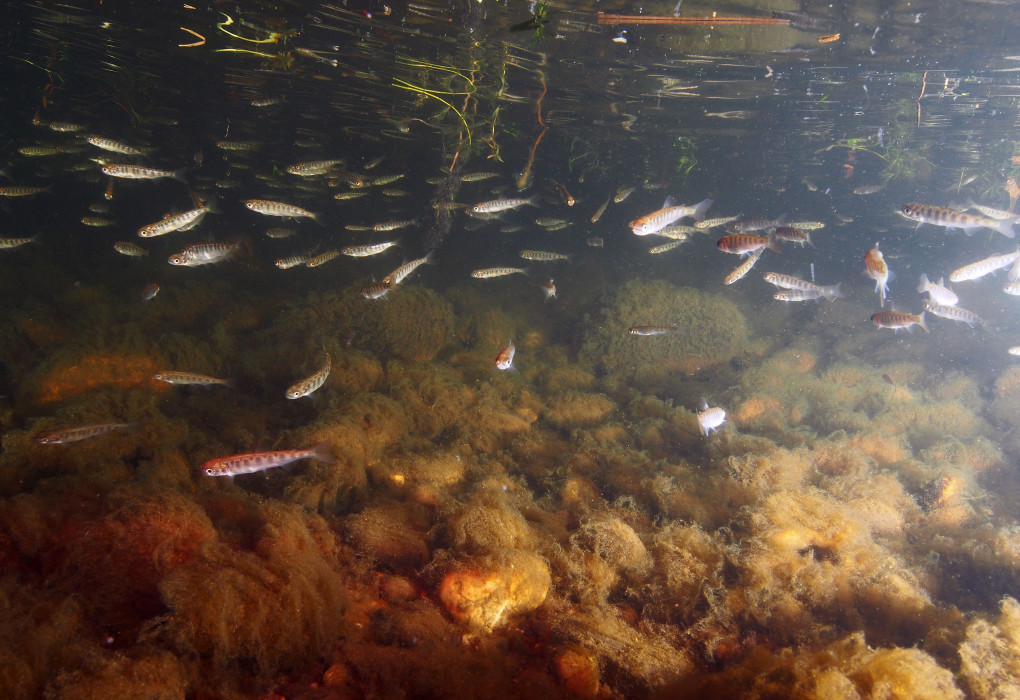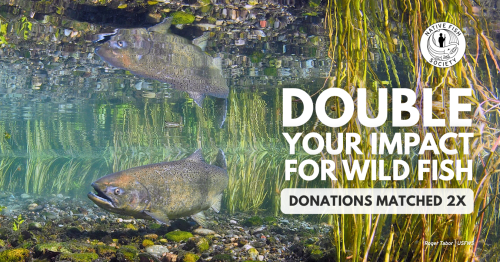Juvenile Salmon Are Attracted to Light at Night
Do you own waterfront property or have a dock? If you do, you may want to consider removing any outdoor lighting at those locations, given the results of a recent study coauthored by Liz Perkin, Native Fish Society’s Northern Oregon Regional Coordinator.
The study, recently published in Lake and Reservoir Management, determined that lakeside lights attracted juvenile salmon, whether the lights emitted red, yellow, or blue wavelengths. The research team set out specially designed lights along a dark section of Lake Washington’s shore right as juvenile Chinook and Sockeye entered the lake from the nearby Cedar River. The study was conducted in 2017 and 2018 with slightly different lights, but found similar results both years. Regardless of whether incandescent lights or various wavelengths of LEDs were used, they all attracted a large number of juvenile salmon compared to dark control sites.
Attraction to light can have deadly consequences for juvenile salmon. During the study, herons were observed using the lights to prey on salmon. In addition, previous research has shown that lights on the banks of rivers slowed the migration rates of sockeye smolts and made them more vulnerable to predation by sculpin.
In addition to Liz, the team was led by Roger Tabor of the US Fish and Wildlife Service and consisted of researchers from the US Geological Survey, NOAA Fisheries, King County Natural Resources, and lighting engineers from RGB Optics.

